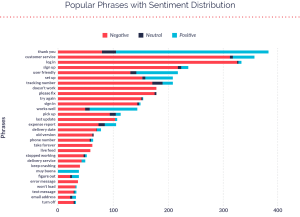— October 27, 2017

StartupStockPhotos / Pixabay
With the market sphere filled with similar products and services, businesses have no other option but to join the tough competition.
The established businesses often have the best of connections, solid social proofs, and top-notch experts helping with their marketing and products outreach.
New and/or small businesses, on the other hand, often don’t have these privileges. Hence, it’s often a difficult task for them to craft out space or earn authority in the sphere.
This can be tagged as one of the major drawbacks that cause many startups to shut down after a short while.
Although startups are often advised to follow the footsteps of the established businesses in the sense that “they are obviously doing something right,” most new businesses don’t have the resources or infrastructures to employ the exact same strategies of the established businesses.
Hence, there is the need for startups to come up with new ways to prove their relevance in the market. Below are 4 of such strategies that can be exercised.
- Utilize a competitive analysis
No business idea is completely new to the market, and even if you happen to come up with one, other businesses will also implement the same idea in no time. This is to say, competition to dominate in your niche is inevitable as long as business is concerned.
But then, with established businesses having more resources, experience, and connections, how can your small business gain a competitive edge, or even stand a chance of dominating similar small businesses?
By not competing with them.
Yes, effective competition can bolster growth and improvement. But what resources or experience do you have to compete with such established businesses?
What to do at this juncture, however, is to utilize what is called competitive analysis.
This involves closely analyzing the established businesses to:
- Uncover strategies that work for them.
- Crucial mistakes they have made in the past.
- Trends they are currently employing.
- Organizations and personnel they network with.
- The marketing approaches they have tried in the past, and the ones currently in place.
Uncovering the above and more about your competitors will help you to tap into the experiences they have garnered over the years.
This simple strategy is the reason entrepreneurs are always on the lookout for the kinds of books the highly successful entrepreneurs read, their morning and night rituals, their exercise routines and so on.
After uncovering the above, place your business model side by side with the uncovered facts to know which to try out first.
This is what differentiates competitive analysis from mere competition.
In competing with the established businesses, you simply analyze what works for them and then try to implement the exact same thing for your business.
In a competitive analysis, however, you analyze what works for the established businesses so you can use the whole facts as a roadmap to try out different approaches and strategies until you discover what works for your business and then you redefine it to make it even better.
Merely competing is wrong because, for instance, an established business may spend hundreds of thousands of dollars in ads while also spending so much more on products and services refinement. But your business currently can’t afford that much fund and if you try to allocate all your funds to ads, your products and services will suffer.
What you do, then, is to analyze how the ads really benefit their business and then come up with ways to also reap those benefits for your business without spending that much money.
In summary, a competitive analysis will help your business to:
- Discover what works for other businesses and then redefine it to work better for yours.
- Garner more knowledge and experience from other businesses.
- Uncover enough business strategies to try out until you discover which works best for your business.
- Implement promising business trends before competitors
The business sphere is constantly evolving, with marketing trends arising and dying off.
A few years back, Infographics were new and not many businesses could readily create one.
That made this content marketing strategy quite effective as consumers viewed it as an entertaining and interesting way to access information online.
Hence, businesses that implemented infographics then built more audience around their business and made great conversions.
Fast-forward to the present, however, infographics don’t hold that much value anymore, and businesses that implement it now just won’t get as many conversions as earlier.
This clearly explains the evolving nature of the business sphere.
New business trends will rise, but the businesses that will benefit the most from it are those that are quick to implement it.
And the only way to discover these business trends is by keeping up with the world market, following industry experts on social networks, and being at alert at press releases from business magazines and publications.
- Pay attention to your branding and products quality
In the end, it all boils down to the quality of services you offer and how effectively you communicate your products and services to and with the consumers.
Though it’s difficult to convince a customer to ignore others and give your services a shot, it’s the customer’s level of satisfaction that determines whether the customer will be a return customer and also make referrals for you.
Hence, rather than just focusing on different types of marketing, it’s important to ensure your products and services are redefined and fine-tuned.
Also, create a heartwarming business logo, a smart and creative tagline, and a business website with an impressive UI and UE. These will serve as a reminder of your brand and products for the consumer until you successfully win such consumer over.
- Freebies and Giveaways still work
A well-planned giveaway can go a long way in gaining exposure for your business and in building repeat customers.
A poorly planned giveaway, on the other hand, will only consume funds that could have better been allocated to other fields.
Because new businesses are still on the verge of convincing and proving their credibility to the consumers, there’s a need to do something that will individually benefit the consumer, and that’s exactly what freebies do.
To ensure your giveaways get to the prospective consumers and not just to freeloaders who have no interest in purchasing from your brand, however, do the following:
- Carry out a little questioning to determine if you’re approaching the right audience, and to know their level of interest in your brand.
- Place your logo and/or business name on the giveaway items.
- Give memorable items that will last quite some time. This, however, doesn’t mean to give really expensive stuff that will affect your finances — a plastic mug with your brand’s logo attached will last longer and have more impact than a pencil.
With the above four approaches, a small business can build a name for itself in the market and equally be able to draw consumers to itself.
Business & Finance Articles on Business 2 Community
(92)






